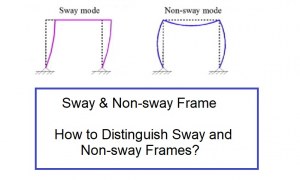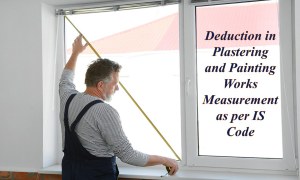🕑 Reading time: 1 minute
Overlays are surface depositions of 6 mm or greater in thickness that can be bonded, partially bonded, or unbonded to the surface of the concrete. The material of overlay may be polymer concrete, Portland cement concrete, epoxies, polyesters, and polymer-modified concrete. Overlay concrete change the appearance, texture, and elevation of the original concrete surface and a variety of different colors and finishes are available. Overlays may bridge nonmoving cracks, but the active cracks may appear again. Overlays are used as a wearing course, provide protection against the intrusion of water and chloride ions, provide abrasion resistance, and may be decorative. Overlays are useful to seal areas with large number of cracks, where individual treatment of each crack is too expensive. Overlays used to seal active cracks must be extensible (must have the ability to elongate and shorten). It is important to note that the cracks are only surface sealed with unbonded overlays and not filled deep inside. The most common overlay of this type is a two or three ply membrane of felt with tar between the plies, covered with gravel, concrete or bricks for protection. For dormant cracks, almost all types of overlays work well. Both a bonded overlay and surface treatment may be used to repair dormant cracks in structural slabs and pavements. Overlays may be placed, troweled, screeded, or sprayed in one or more layers onto the concrete surface. The additional dead load of overlays is to be considered in the analysis of an existing structure. Overlays can be designed to act compositely with the existing structure and additional reinforcement in the form of welded-wire fabric, and reinforcing steel or fibers may be added.
For an overlay to perform properly, the surface to which it is bonded should be clean, sound, and appropriately roughened. Bonded overlays are not used where there is active cracking or structural movement. Unbonded overlays may be used in such situations.
Before placing the overlay, the surface must be thoroughly cleaned and made free of laitance, weak material, grease or oil and a bond coat consisting of finer material of overlay or an epoxy adhesive is applied immediately before placing the overlay. Overlays generally consist of polymer-modified Portland cement mortar or concrete, or by silica fume concrete.
The polymers commonly employed are styrene butadiene or acrylic latexes that are added in quantities equal to 15 to 20 percent by weight of the Portland cement. The overlay minimum thickness can be about 30mm and used to cover fine dormant cracks. Polymer-modified overlays are mixed, placed and finished within 15 min in warm weather and may require a 24-hr moist curing.
A vapor barrier overlay on slabs-on-ground in freezing climates must not be used. Thin, cementitious overlays are susceptible to plastic-shrinkage cracking because their high surface-to-volume ratio causes rapid evaporation under drying conditions. Cracking in bonded overlays has at least one of four causes:
1. Tearing of the surface due to late finishing operations.
2. Plastic shrinkage from excessive drying.
3. Differential movement between the deck and the overlay due to temperature differences or drying shrinkage.
4. Existing cracks reflected through the overlay.
Testing of the in-place concrete must be done before surface preparation to determine the modulus of rupture of the concrete and after the overlay has been completed to determine bond strength. There are following common types of overlay systems:
Overlays may be placed, troweled, screeded, or sprayed in one or more layers onto the concrete surface. The additional dead load of overlays is to be considered in the analysis of an existing structure. Overlays can be designed to act compositely with the existing structure and additional reinforcement in the form of welded-wire fabric, and reinforcing steel or fibers may be added.
For an overlay to perform properly, the surface to which it is bonded should be clean, sound, and appropriately roughened. Bonded overlays are not used where there is active cracking or structural movement. Unbonded overlays may be used in such situations.
Before placing the overlay, the surface must be thoroughly cleaned and made free of laitance, weak material, grease or oil and a bond coat consisting of finer material of overlay or an epoxy adhesive is applied immediately before placing the overlay. Overlays generally consist of polymer-modified Portland cement mortar or concrete, or by silica fume concrete.
The polymers commonly employed are styrene butadiene or acrylic latexes that are added in quantities equal to 15 to 20 percent by weight of the Portland cement. The overlay minimum thickness can be about 30mm and used to cover fine dormant cracks. Polymer-modified overlays are mixed, placed and finished within 15 min in warm weather and may require a 24-hr moist curing.
A vapor barrier overlay on slabs-on-ground in freezing climates must not be used. Thin, cementitious overlays are susceptible to plastic-shrinkage cracking because their high surface-to-volume ratio causes rapid evaporation under drying conditions. Cracking in bonded overlays has at least one of four causes:
1. Tearing of the surface due to late finishing operations.
2. Plastic shrinkage from excessive drying.
3. Differential movement between the deck and the overlay due to temperature differences or drying shrinkage.
4. Existing cracks reflected through the overlay.
Testing of the in-place concrete must be done before surface preparation to determine the modulus of rupture of the concrete and after the overlay has been completed to determine bond strength. There are following common types of overlay systems:



